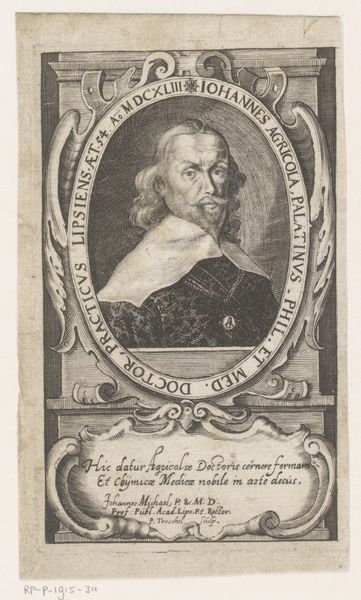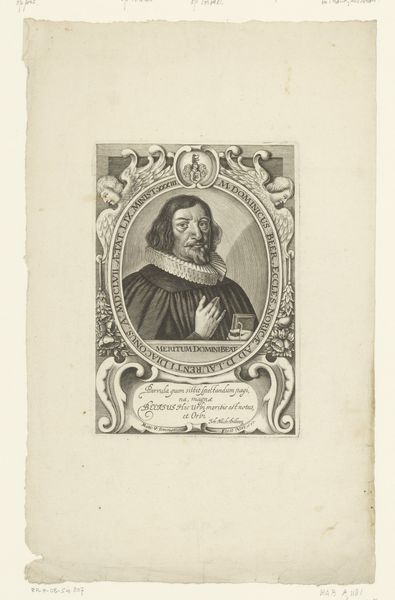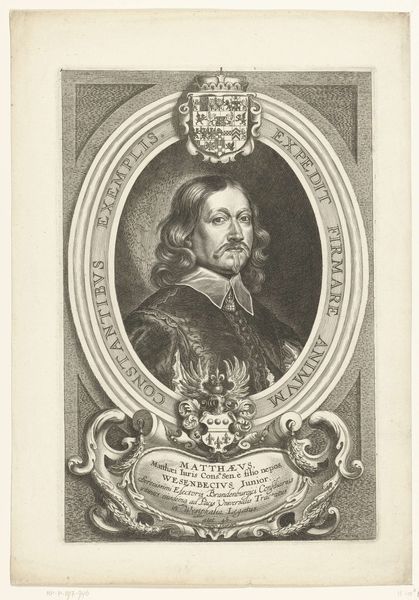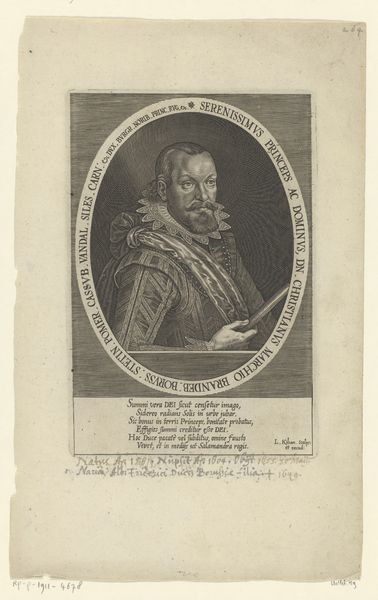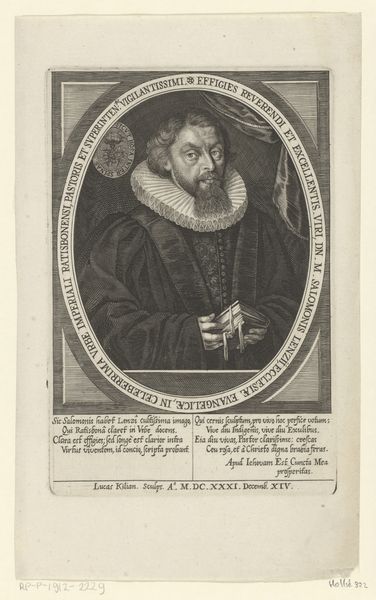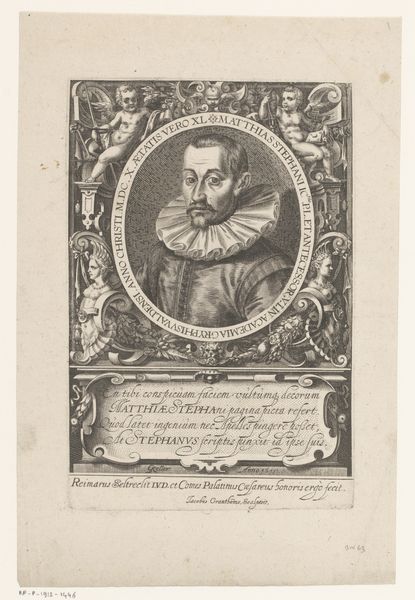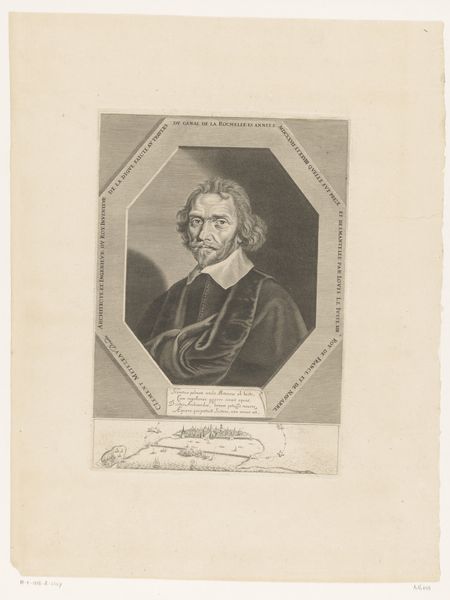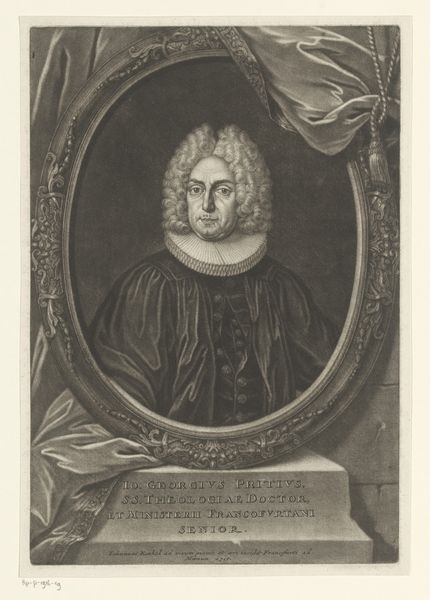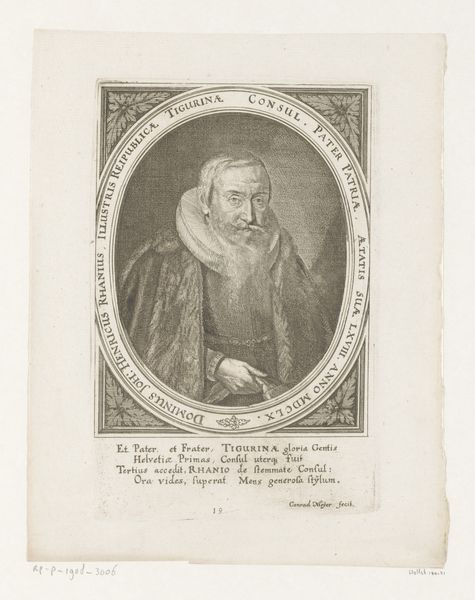
print, engraving
#
portrait
#
baroque
# print
#
old engraving style
#
figuration
#
line
#
history-painting
#
engraving
Dimensions: height 203 mm, width 142 mm
Copyright: Rijks Museum: Open Domain
Curator: The somber and subtly defiant air of this Baroque portrait strikes me immediately. The texture, achieved through the intricate line work of an engraving, presents a character steeped in authority and perhaps a touch of melancholic introspection. Editor: We're looking at a work from 1668: Bartholomaus Kilian’s portrait of Zacharias Schoapp. This piece exists as a testament to the printmaking traditions of the Baroque period, circulating images and reinforcing societal hierarchies through readily available reproductions. The sitter's name is written across the top section. The engraver cleverly makes the ornamental frame work seamlessly with both the portrait and its dedicatory text, offering some indication of his public role. Curator: His role is central to my interest. The sitter isn’t just anyone; look at his attire, the way he holds what looks like flowers or herbs. These elements serve as symbols, speaking to his societal standing and potentially to aspects of his character or affiliations, even belief systems that require close contextual reading today. Who *was* Zacharias Schoapp within the sociopolitical fabric of his time? Editor: Zacharias Schoapp was a prominent lawyer of his time, sitting in Augsburg. Legal portraits often had political and social undertones as they presented archetypes of moral rectitude for others in society to emulate. As you look to the bottom section, you will notice a biblical scripture inscribed. “Righteous God judges right and speaks righteous judgment" The placement of the frame along the bottom, with that inscribed blessing, tells me the artist believed Zacharias Schoapp served society well as a gatekeeper of justice. Curator: Which raises the question, how might his power as a lawyer manifest in lived realities, particularly for marginalized communities within his jurisdiction? And to consider this, we must scrutinize the socio-legal structure, power relationships, and access to recourse for vulnerable people under the law at the time. Even that small floral posy might represent complex botanical semiotics! Editor: A valid consideration and yet the work can equally be interpreted as a homage. It showcases technical artistry and also commemorates someone who made civic contributions during an important chapter in history. Curator: Perhaps this emblem, through his meticulous attention to detail, captures a particular image of a figure meant to last—reflecting how people want to be seen by and remembered throughout history. Editor: And, perhaps, prompts us to continue researching the reality beyond such posed portrayals, giving full shrift to social conditions, civic and personal responsibilities, and the weight of expectation such roles implied.
Comments
No comments
Be the first to comment and join the conversation on the ultimate creative platform.
